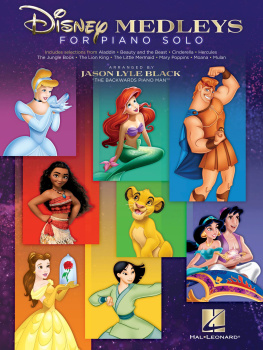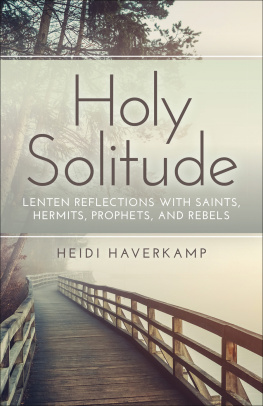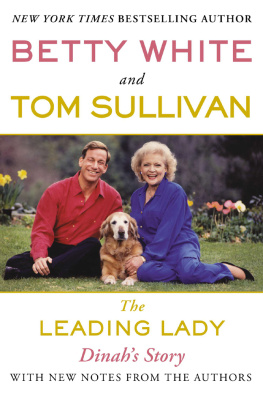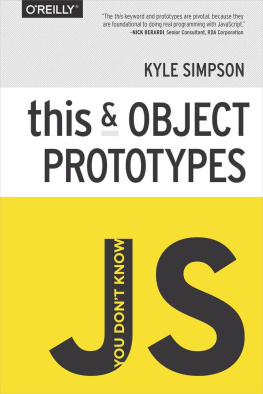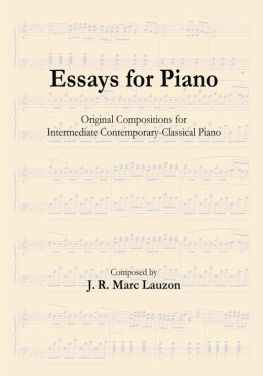THE OBJECT PARADE


Copyright 2014 by Dinah Lenney
All rights reserved under International and Pan-American Copyright Conventions. No part of this book may be used or reproduced in any manner whatsoever without written permission from the publisher, except in the case of brief quotations embodied in critical articles and reviews.
Library of Congress Cataloging-in-Publication Data
Lenney, Dinah.
The object parade : essays / Dinah Lenney.
pages cm
ISBN 978-1-61902-384-0 (eBook)
1. Lenney, Dinah. 2. ActressesUnited StatesBiography. I. Title.
PN2287.L425A3 2014
791.43028092dc23
[B]
2013044917
Interior design by Sabrina Plomitallo-Gonzlez, Neuwirth & Associates
COUNTERPOINT
1919 Fifth Street
Berkeley, CA 94710
www.counterpointpress.com
Distributed by Publishers Group West
10 9 8 7 6 5 4 3 2 1
for Fred
I am giving you this because I love you. Or because it was given to me. Because I bought it somewhere special. Because you will care for it. Because it will complicate your life.
Edmund de Waal, The Hare with the Amber Eyes
The object... has no duty whatsoever toward me, it is I who am obliged to it.
Francis Ponge, Mute Objects of Affection
IN THE BEGINNINGor somewhere in the middle actuallythere was a parade. A parade of objects. Around a schoolyard. On a weekday morning, bright but unseasonably cold. At the appointed hour everybodychildren, teachers, parents, staffspilled out of classrooms and offices and cars, and congregated on one side of the blacktop. On the other, the calvacade assembled. My son Jake, nine or ten at the time, got in line with his mates, head, arms, and legs sticking out of a box, turquoise, equipped with a long antenna (also turquoise) and a speaker/receiver, a slightly sloping grid of black dots, painted on its face.
It had rained the night before. I remember iridescent puddles on the two-ball courts. How they mirrored pieces of clouds, along with wiggling oblongs of red, green, gold, purple, (turquoise), poster paint colors; how the objects, shivering in anticipation and because of the chill, squeezed themselves into wedges of sunshine here and there. And then it began, to scattered cheers and applause, the kids hushed and shuffling at first, solemn and shy, but, as they rounded the first corner, increasingly jubilant: first, the isolated hop or skip, then, as if a spring had been released or a switch flicked, an exuberance of jumping and running and whooping and shouting. The occasional shove, too, of course; the elbow stuck, the heel caught, the stumble and cry, when theyd halt as one, for the pencil, whod lost his eraser, rescued before it rolled into the wet, or the turquoise walkie-talkie whod stopped to right his antenna, which, from the beginning, tacked to one side.
Why arent there pictures? There ought to be pictures. What I wouldnt give for an image or two, alongside this hubbub of recall, of various stages of planning and building and stepping around kids on the linoleum, or looking over the tops of their heads where they sat at low tables, all of them absorbed in some phase of creationdrawing, mixing (newspaper and paste), molding, painting.
I remember that pencil, number two, mustard yellow, four feet tall; and assorted fruits and vegetables; a violin, a candlestick, a spoon, a fork, a baseball bat. Was there a box of cereal? Yesyes, I can see it, Fruit Loops, I think it was, or possibly Captain Crunchit came up to my shoulders. And I know there was a bottle of nail polish, waist-high. Also a globe, slightly misshapen. A football. A bowling pin, a teddy bear, an alarm clock. Some forty objects, there being forty kids, third and fourth graders, in all. And the reason for the event? Celebration, culminationa curricular punctuation pointhaving to do with the theory that children will understand the world if they build it for themselves. Therefore each child had picked something, some thing: taken it apart for science and math, researched its history and cultural relevance for social studies, described it in prose and poetry for language arts, and then sculpted it from papier mache, pungent at first, and then crusty and ubiquitous (for weeks it came home in their hair and their laces and under their nails), to wear in the Object Parade.
But how did they choose? For themselves for the most part, in spite of opinionated parents and siblingsfrom the strange, the familiar, the real, the imagined, the old, the new; from animal, vegetable, mineral, edible. It was Jakes idea to be a walkie talkie, and he wanted to be blueat which point we did wield our influence; convinced him that turquoise was almost blue (he pretended to be convinced anyway) since otherwise hed have marched as a navy blue blob, no distinguishing features. But as determined as I was to change his mind, I didnt ask whywhy blue? Why that shade?just assumed it was because dark blue was his favorite. Later, long afterwards, I realized: Jake had been given walkie talkies as a present a year or two before. And think of the adventuresconsider the possibilities (this before cell phones)the thrill of whispering from upstairs to down, from out back to out front, as if from the earth to the moon, from Alaska to the Amazon, from New York to L.A. Eventually, as happens, one of the pair got wet, or crushed, or lost, or was only misplaced, by which time the novelty had mostly worn off: still, blue-black they were, the originals, and theyd enjoyed unprecedented status and play. I should have understood, aesthetic considerations asideit was the truth Jake was after for the Object Parade; the deep and resonating satisfaction and reward of memory faithfully and authentically revealed.
But is that why he wasnt especially attached to the replica-in-turquoise? Because cooperative as hed been about the color, it was just all wrong? I wonderI even wondered at the time why he didnt seem to notice, much less protest, when I took the big-as-life walkie talkie down to the basement, where it nonetheless continued to get in the way. Every time I pulled out a suitcase or went looking for last years tax return it toppled in my path until one day I finally dragged it out the back door, up the side of the house and onto the street, along with a hockey stick, a pair of crutches, and an old computer console. There it sat in the gutter with the rest, chipped and misshapen, its antenna bent by this time at a sickening angle. Two days later when the truck finally came, I watched from the window, relieved, at first, to get rid of the junk; but as the gears groaned and the big wheels pulled away from the curb, I admit I had this crazy urge to open the front door and follow down the hill, screaming, Wait, no.
Not that I mourned for long. For one thing, a clear-sighted friend once told me, Dont cry over anything that cant cry over you. For another, it had only been an object standing in for an objectand if some things are valuable for all time, others turn out to have a shelf life, right? But how to decide? How to account for which is which? For why Ive held on to this and thrown away that. It isnt as simple as size or materials or even personal taste. Certain objects, not always the ones wed expect to keep or remember or dream about, insinuate themselvestake on a lustre in which we are reflected: by which special effect we can somehow see, if not where were going, where we were, and even why we are where we are. Things, all kindsordinary, extraordinarytether us, dont they, to place and people and the past, to feeling and thought, to each other and ourselves, to some admittedly elusive understanding of the passage of time. Thingsalone and in relation to other thingstell the stories of our lives, which, once told, sometimes (not always) release their holdnot only the stories but the things themselvesallowing us, enabling us, in fact, to move on. To keep going. To have conviction, not in the idea of a master plan or puzzleits not as though theres a blueprint or a picture for reference on the cover of the boxonly in our singularly human urge to carry on as if meaning, regardless of notions of personal destiny, will emerge and accumulate. That is, once we hold an object up to the lightor maybe turn it over and give it a shakeonce we believe its divulged its secrets, perhaps we can more easily let it go. Not that Im ready in most cases, not yet, to do any such thing. But its funny to thinkafter the parade, it was I, not my boy, who insisted on stowing the turquoise box in the back of the minivan and taking it home. Regardless of its hue, even if wed gotten that part right, Jake would have chucked it or left it behind. Hed remembered and studied and considered and reimaginedthen, at last, hed climbed inside his creation and marched in a procession for all to see. End of story, as they sayJake didnt need the object anymore. As far as he was concerned, it had served its purpose.
Next page

